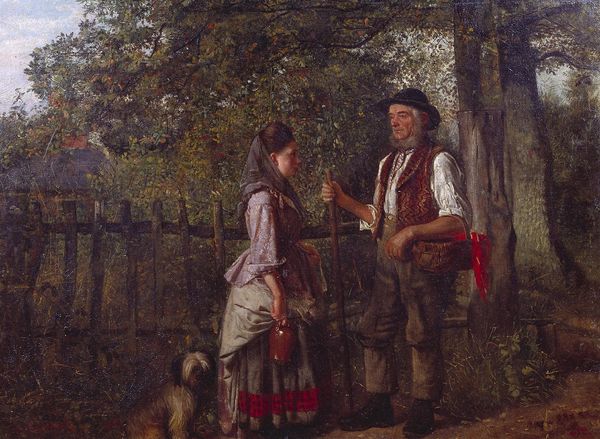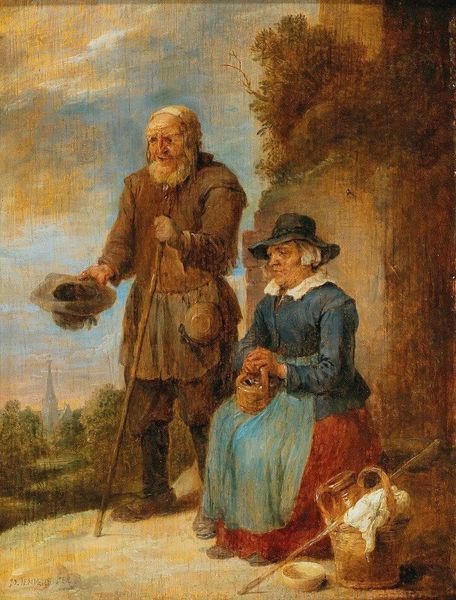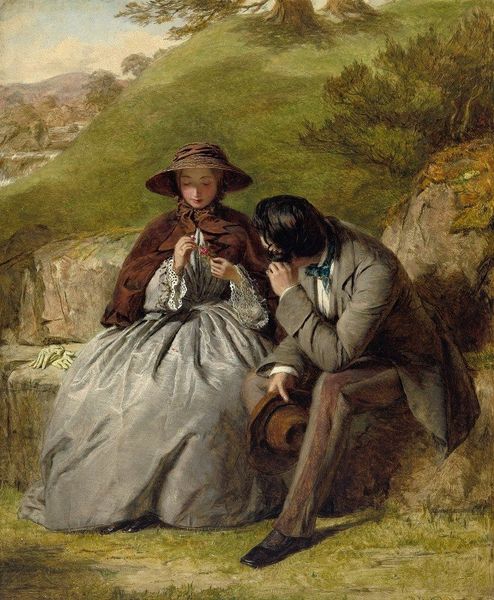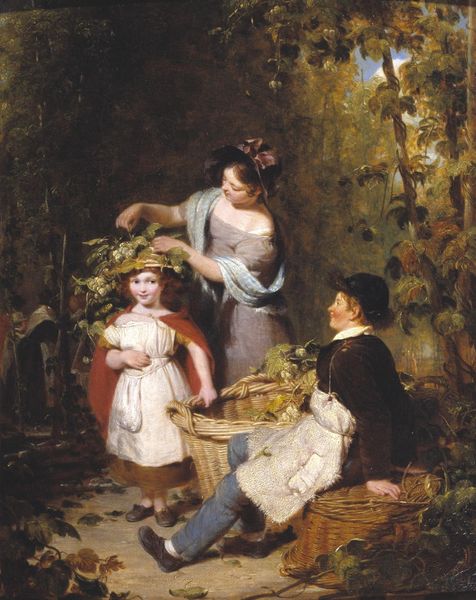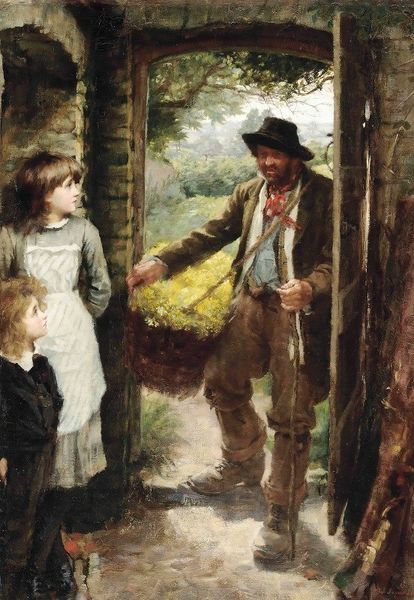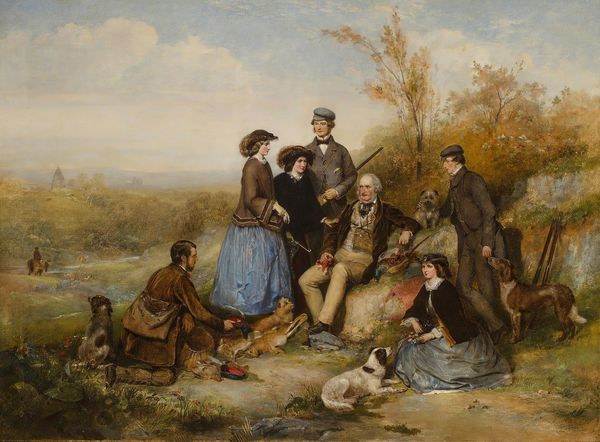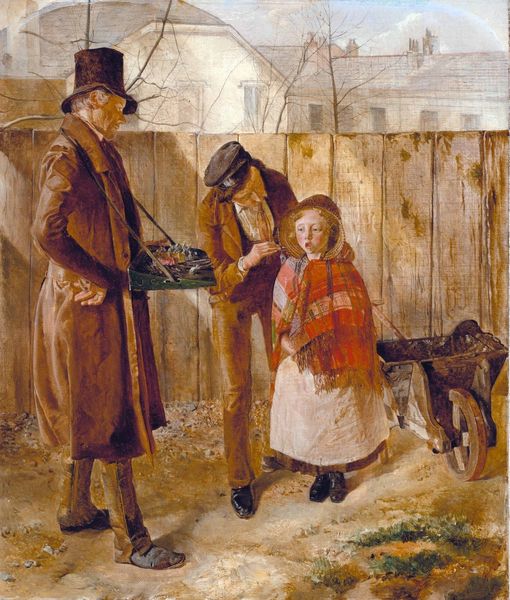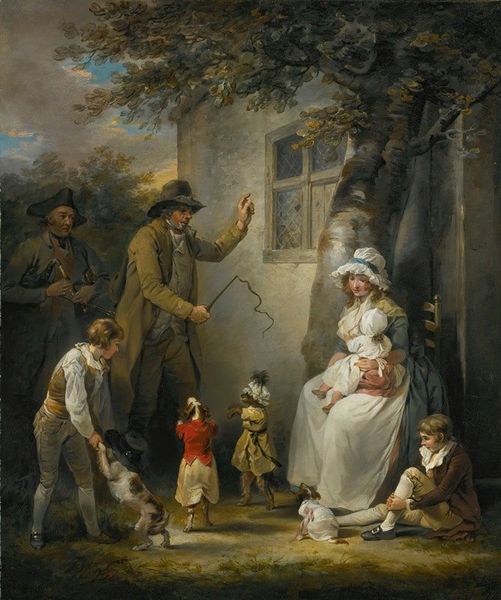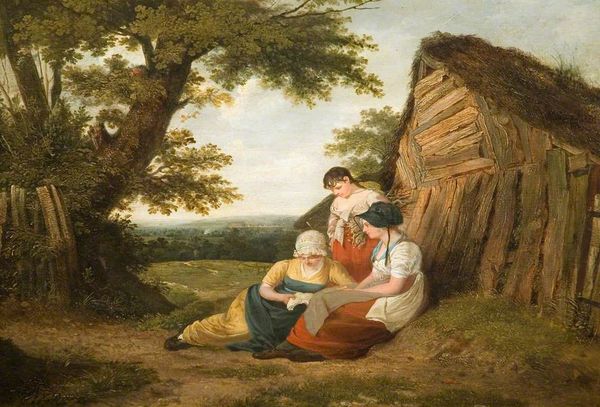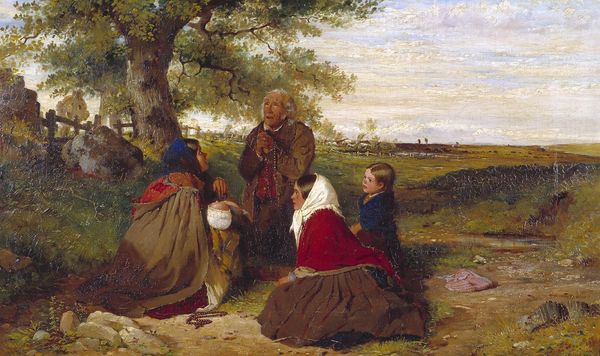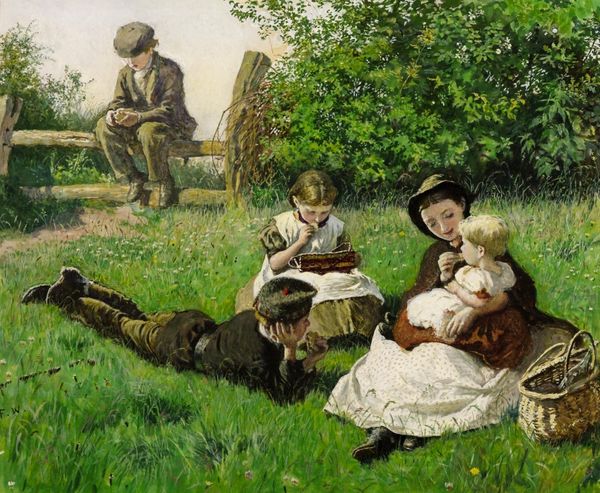
Dimensions: support: 533 x 432 mm
Copyright: CC-BY-NC-ND 4.0 DEED, Photo: Tate
Curator: James Turpin Hart, active in the mid-19th century, painted this genre scene, entitled "A Rustic Timepiece." It is currently held in the Tate Collections. Editor: It strikes me as an idyll, a very neatly composed one, with that central figure offering the dandelion clock. The palette is quite earthy. Curator: The figures are positioned in a very deliberate way, aren’t they? The woman is the anchor, drawing our attention to the little girl. The boy in the back almost seems to be hiding. Editor: True. The light emphasizes the textural contrast. Note the rough-hewn fence against the soft fabrics. The dandelion itself, a symbol of transience and ephemerality. Curator: The painting evokes a sense of rural simplicity, perhaps romanticizing country life, a popular theme in art of that period, as industrialization progressed. Editor: I think the artist's emphasis on shape and form certainly conveys a certain tranquility. The narrative is less important than the visual harmony. Curator: Well, I appreciate your formal reading, but I do think the narrative plays into the social commentary of its time. Editor: I see what you mean, but its balanced composition will be on my mind later.
Comments
tate 7 months ago
⋮
http://www.tate.org.uk/art/artworks/hart-a-rustic-timepiece-t03396
Join the conversation
Join millions of artists and users on Artera today and experience the ultimate creative platform.
tate 7 months ago
⋮
This painting, exhibited at the Royal Academy in London in 1856, is typical of the sentimental view of rural life favoured by middle-class gallery visitors. James Turpin Hart specialised in rustic and narrative scenes. Here, a group of country people are gathered by a stile; the little girl is blowing on a ‘dandelion clock’. According to tradition, the number of puffs it takes to blow away the downy heads will tell you what time it is. The implication is that simple country folk are quaintly ‘in touch with nature’. Gallery label, September 2004
